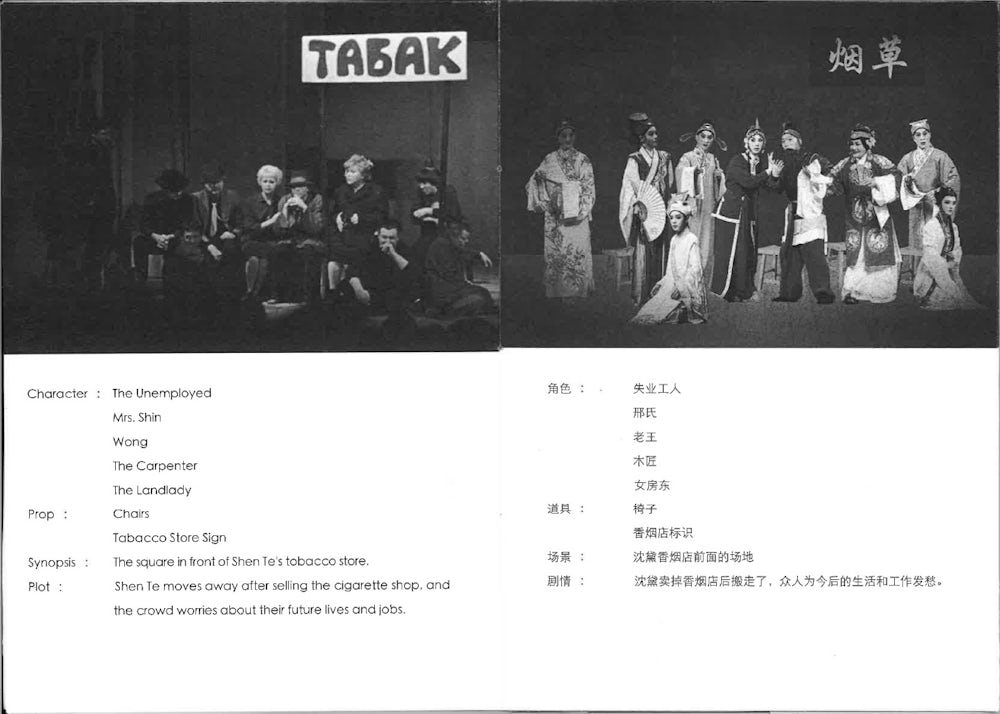This project explores the intersection of theatre, translation, and Bertolt Brecht’s materialist approach, focusing on how social and cultural contexts influence theatrical communication. It examines Brecht’s estrangement effect and its adaptation to Chinese theatre, specifically Szechwan Opera, to reimagine his plays in a traditional Chinese context. Brecht admired Chinese theatre for its gestus—gestural and symbolic techniques that encouraged critical thinking by maintaining emotional distance.
Using The Good Person of Szechwan as a case study, this project bridges Brecht’s imagined China with authentic cultural practices. While the play critiques moral and social contradictions in a Szechwan-inspired setting, it lacks direct connections to the region. By reimagining it through Szechwan Opera, the project explores how Brecht’s themes resonate within a more authentic Chinese framework.
As a form of republication, the playbill is reinterpreted as a bridge between Brecht’s work and the traditions that inspired it. The design, structure, and content of the playbill incorporate critical annotations and interactive features, reflecting Brecht’s vision of epic theatre as a medium for political engagement and social critique. By adapting Brechtian concepts to Chinese theatre and redesigning the playbill as a dynamic scenographic tool, the research highlights theatre’s power to provoke critical questioning. This hybrid playbill, inspired by pop-up theatre books, extends audience engagement beyond the performance space and promotes reflection on themes of power and morality across cultural boundaries.
The research draws from Brechtian theory and Chinese theatrical traditions to contribute to cross-cultural adaptation studies. Incorporating formats like Punch and Bunny, to combine traditional Szechwan Opera with Brecht’s principles to explore new possibilities for critical engagement. The bilingual playbill, featuring annotations and diagrams, aims to transcend language barriers while fostering understanding and interaction.
The playbill merges traditional formats with innovative pop-up elements, serving as a scenographic tool that engages audiences interactively. It deepens critical engagement while acting as a portable, collectible artifact. Designed for both Chinese and English audiences, it circulates as both a pre-performance guide and post-performance memento, extending the impact of the play beyond the stage.


